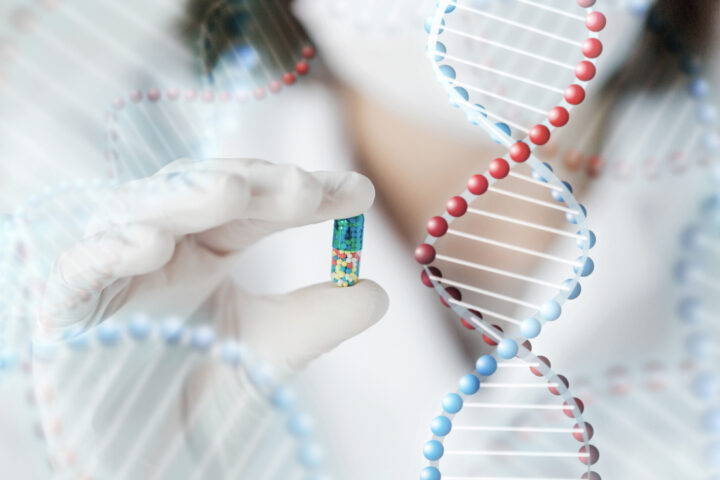Imagine having the ability to reset your cells, effectively turning back their biological clock. This concept, once confined to science fiction, is now a promising frontier in aging research. Cellular reprogramming, a process pioneered by Shinya Yamanaka in 2006, aims to rejuvenate old, dysfunctional cells by reverting them to a more youthful state. Recent advances are propelling this technology from theoretical possibility to practical application, but not without scrutiny and debate.
From Mice to Humans: The Rise and Scrutiny of Cellular Reprogramming
Researchers from institutions like Harvard Medical School and MIT have made significant strides in this field, demonstrating age-reversal effects in animal models. In 2023, a study claimed successful age reversal in mice using cellular reprogramming techniques. While these findings have generated excitement, they have also faced criticism regarding statistical analysis and data presentation.
Statistical Controversies
One of the main concerns raised pertains to the statistical methods used in the study, specifically in Figure 1, panel K. Critics have pointed out that the authors employed a two-tailed t-test where a one-tailed t-test would have been more appropriate. In statistical analysis, a two-tailed t-test is used when differences can occur in both directions—either increase or decrease. However, when measuring values that cannot go below zero, such as percentage measurements with a lower bound at zero, a one-tailed t-test is more suitable to detect a significant increase.
Furthermore, the reported percentage of indel frequency (a measure of DNA insertions and deletions) for the control group was very low—ranging from 0.14% to 0.26%—while the experimental group had values ranging from 0.10% to 2.12%. Critics note that the data was graphed with a y-axis ranging from 0% to 100%, which can minimize the visual representation of differences between groups when the actual data varies within a much smaller range. This choice in data visualization may obscure meaningful differences and has raised concerns about the clarity and transparency of the data presentation. And finally, performing the one-tailed t-test confirms that the indel frequency is higher in the experimental group, which could indicate greater genomic instability.
Implications and the Importance of Rigorous Analysis
These statistical and presentation issues highlight the importance of rigorous data analysis and transparent reporting in scientific research. Accurate statistical methods are crucial for validating results and ensuring that conclusions drawn from the data are reliable. While the concerns raised do not necessarily invalidate the study’s findings, they suggest that further scrutiny and replication are needed to confirm the results.
The Science Behind Cellular Reprogramming
Despite these challenges, the fundamental concept of cellular reprogramming remains a significant area of interest. The process involves introducing specific factors—known as Yamanaka factors—that can revert adult cells to a pluripotent stem cell state. This essentially “erases” the cell’s identity, allowing it to start anew. Researchers are exploring ways to partially reprogram cells to rejuvenate them without fully reverting them to stem cells, which can pose risks such as uncontrolled cell growth.
Cells accumulate DNA damage, epigenetic alterations, and cellular debris like misfolded proteins over a lifetime, contributing to the aging process. By resetting these aged cells back to a more youthful state, cellular reprogramming has the potential to reinstate cellular functionality and combat age-related diseases.
Real-World Wolverine: Healing and Regeneration
In the fictional world of the X-Men, Wolverine possesses the ability to heal and regenerate rapidly, defying the natural aging process. While we may not achieve superhero levels of regeneration, cellular reprogramming brings us closer to enhancing the body’s natural repair mechanisms.
David Sinclair, a leading figure in longevity research at Harvard University, has conducted experiments showing that a combination of factors can reverse age-related changes in mouse cells within a week. This process cleared out senescent cells—often referred to as “zombie cells” because they no longer function properly yet refuse to die—which can accumulate and contribute to aging and disease.
Tackling Aging’s Hallmarks
Cellular reprogramming targets the core mechanisms of aging, often referred to as the “hallmarks of aging.” These include mitochondrial dysfunction, telomere shortening, and epigenetic alterations. Telomeres, protective caps at the ends of chromosomes, shorten with each cell division, leading to cellular senescence or apoptosis when they become too short. By resetting these and other age-related changes, cellular reprogramming holds the potential to not only halt but reverse aspects of the aging process.
In one study, researchers were able to restore vision in elderly mice by reactivating genes responsible for youthful function. Such findings raise the possibility of reversing conditions like glaucoma or age-related macular degeneration in humans.
Balancing Optimism with Caution
While excitement around cellular reprogramming builds, so do ethical questions and scientific challenges. The recent statistical controversies underscore the necessity for meticulous methodology and transparent reporting. Scientists emphasize the need for caution—it’s essential to address potential risks such as the possibility of inducing cancer by disrupting crucial biological safeguards.
Long-term studies are necessary, starting with patients suffering from conditions characterized by premature aging, such as progeria. The prospect of significantly extending human healthspan—the period of life spent in good health—also raises societal and ethical considerations, including questions about accessibility, impacts on population dynamics, and the definition of a natural lifespan.
The Future is Closer Than You Think
Advancements in cellular reprogramming could revolutionize how we approach aging and healthcare, shifting the focus from treating diseases to maintaining health and function throughout life. While challenges remain, including addressing methodological criticisms and ensuring the safety of new therapies, we are on the cusp of breakthroughs that could fundamentally change our understanding of aging.
Immortality or Event Horizon?
Cellular reprogramming represents a promising avenue in the quest to understand and potentially mitigate the effects of aging. As research progresses, addressing both the scientific challenges and ethical implications will be crucial. The journey involves careful scientific exploration, rigorous analysis, and transparent communication. With these in place, the potential benefits for humanity—including extended healthspan and improved quality of life—are immense.
Sources:
- Scitechdaily, 2023, “Age Reversal Breakthrough: Harvard/MIT Discovery Could Enable Whole-Body Rejuvenation”
- Fortune, 2023, “Chemical cocktail may reverse aging in just 1 week”












